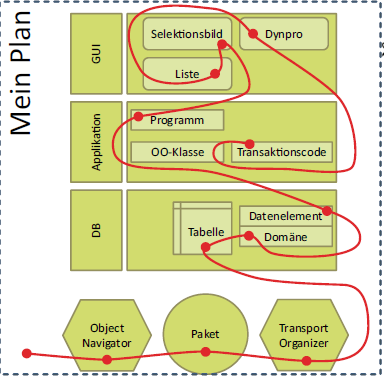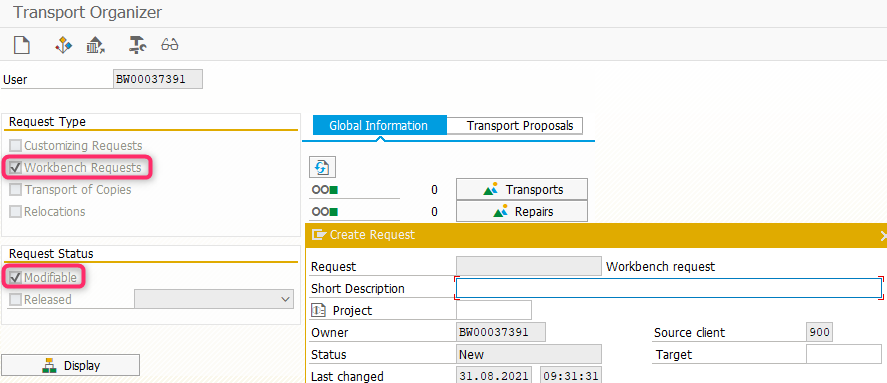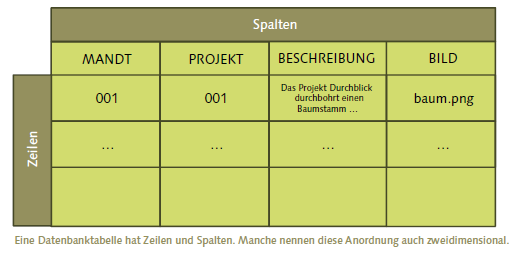Copyright goes with Rheinwerk Verlag from book „Schrödinger programmiert ABAP“ in German.
Overview of ABAP-programming:


Main toolbox starts with SE80

Programming starts normally in the Development system via transport orders the program being testet in QA system and finally released for productive system. To coordinate the development activities workbench request being created in SE09. A workbench request bundles all programming objects based on a project. The work organisation lasts only until the workbench request not being released, so temporary assignment.

If you wish a permanent assignment the object „Package“ is the correct one. The Standard Package can bundle several programming objects. Create via SE80.
Database Table
stores permanently data (relationalen data base). Each DB table has columns where ABAP Dictionary assigns specific types. Some columns were assigned as key columns so clear identification is possible. In addition certain technical attributes have to be set. Columns includes data and lines the single data set.

Domain and Data Element
The so-called two-layer domain concept includes the connection of data element with domain. The data element specifies the semantic information and the domain the technical information.
Create Domain and Data ElementABAP-Syntax/ Source Coding
Declaration of a variable with a certain type:
DATA gd_you_can_do_it TYPE abap_bool.
Naming of a input field (GER Eingabefeldes) with a certain type:
PARAMETERS pa_car TYPE s_carr_id.
Assign variable a text litera:
gd_you_can_do_it = ‚X‘.
Fill data/ text into work area (GER Listpuffer):
WRITE ‚Why not write something nice more often‘.
How to comment source coding:
* This is a comment, but only if the
* (Star) is set in the first column
WRITE / ‚for example: ABAP I am dreaming of you‘
If you want to add several items use WRITE: or DATA: – for example:
WRITE: ‚And now‘, ‚another‘, ‚valuable‘, ‚example‘.
DATA: gd_count TYPE i, gd_first_snack TYPE string value ‚Snickers‘.
Modularisation via GER Ereignisschluesselwoerter:
START-OF-SELECTION
